“The British Pavilion at the Biennale Architettura 2023 celebrates what it means for people to create and occupy space. Through the lens of South Asian, African, and Caribbean diasporas in Britain, Dancing Before the Moon explores how rituals have the potential to uniquely adapt and challenge the built environment. Here social and temporal practices are upheld for enhancing attachment to the land, transforming space, and binding communities."
Jayden Ali, Joseph Henry, Meneesha Kellay, and Sumitra Upham, curator team.
In the UK, rituals practiced by diasporic communities are powerful vehicles for forging new spaces that promote cultures and traditions that are not considered in the planning of Britain’s built environment. Dancing Before the Moon celebrates those rituals and presents new ways of thinking about architecture beyond buildings and economic structures.
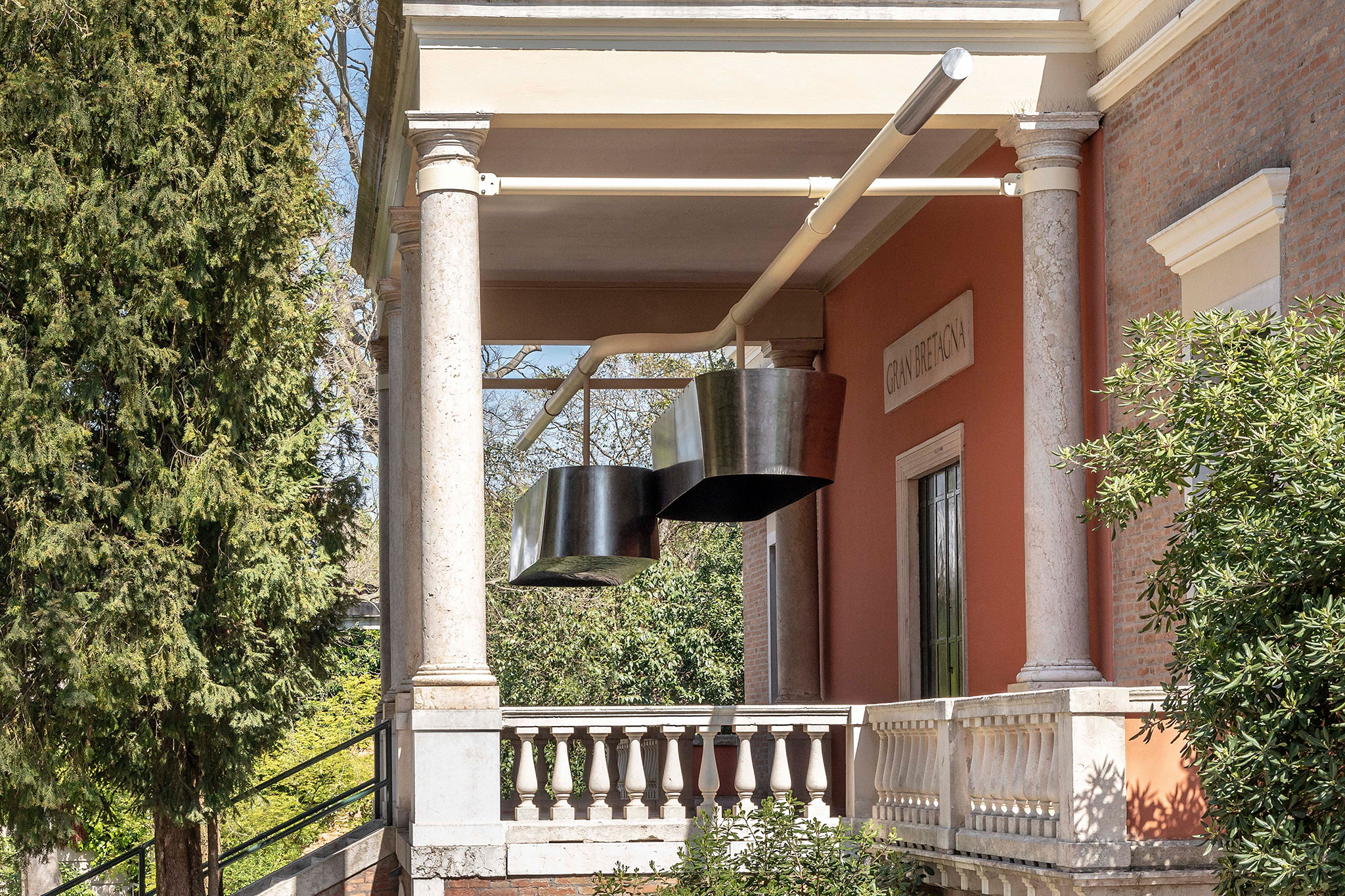
"Thunder and Şimşek", Jayden Ali. The British Pavilion, 2023. Courtesy of British Council.
Each installation, by artists interested in materials and making, acknowledges everyday rituals from different global settings: architecture and textile traditions in Cherokee and Yoruba culture; Hindu and Buddhist belief in the afterlife; outdoor washing in Angola; healing spiritual practices in the American south; Jamaican dominoes in Nottingham; and the craft of Trinidadian steel pan drum-making and Cypriot outdoor cooking. The main hall of the pavilion has a large cinematic installation with a film made by the curators with numerous collaborators, that highlights the central role that rituals play in reflecting the traditions and community values of people living in the UK.
This installation responds to the wider themes of the Biennale Architettura 2023 - The Laboratory of the Future – giving audiences a chance to imagine different futures where collaboration, experimentation, and equity are prioritized in the planning of space in the UK.
Dancing Before the Moon film
In the main hall of the Pavilion, new film work is shown on a large screen in a space dedicated to gathering and sharing ideas. The film observes rituals performed by the global diaspora in Britain, demonstrating an appreciation of the land, community values, and sharing space. Through dance, procession, games, growing, and worship we are reminded that irrespective of race, culture, and socio-economic circumstances, we are all capable of inventing and transforming what’s around us. The film includes new footage shot around the UK including a pub in Nottingham and a hair salon in Streatham and some rarely-seen archive footage from the BFI. A new soundtrack accompanies the film, blending old and new music in a new score devised by musicians Oscar #worldpeace and Fredwave. As a room for a congregation, the main hall will host a program of public events including film screenings and talks.
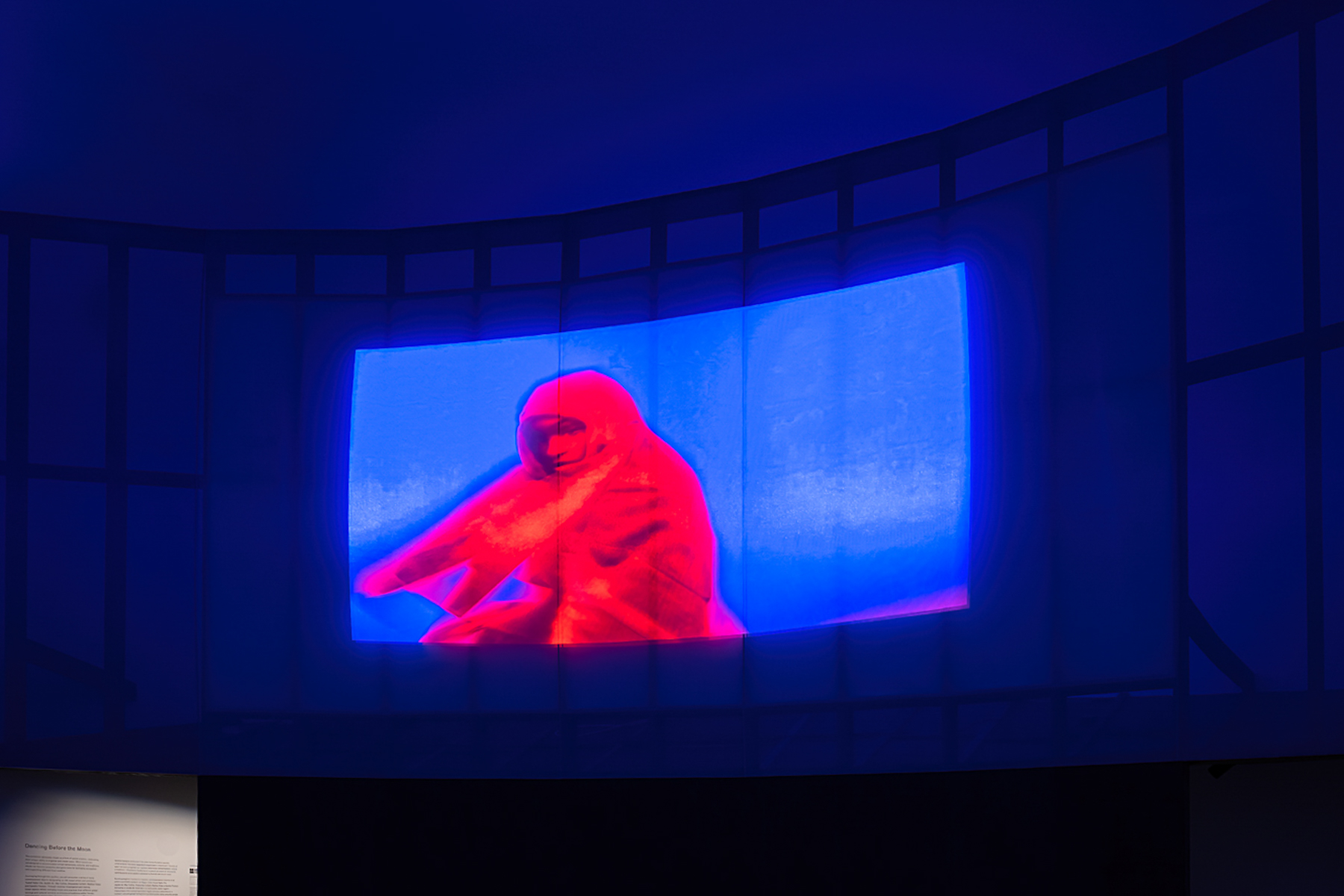
"Dancing Before the Moon" film. The British Pavilion, 2023. Photograph by Cristiano Corte, courtesy of British Council.
The exhibition
Jayden Ali, "Thunder and Şimşek"
As visitors approach the entrance of the British Pavilion, they immediately encounter an installation on the exterior of the Pavilion. Thunder and Şimşek explore Ali’s ancestral ties to the islands of Trinidad and Cyprus. This large-scale installation reflects the hybridized cultures and rituals that have grown from occupation. The overhead sculptures, made using steel hammered into shape, represent both the pastimes of Trinidadian steel-pan playing and Cypriot cooking - rituals that became critical to the descendants of these colonized islands claiming space in the UK. The sculptures occupy the traditional façade of the Pavilion’s portico - reimagining the portico as a transitory space for departure and arrival.

"Thunder and Şimşek", Jayden Ali. The British Pavilion, 2023. Courtesy of British Council.
Sandra Poulson, "Sãbao Azul e Água"
Artist Sandra Poulson’s practice draws from her personal experience and observations growing up in Luanda, Angola. Dust sweeps Luanda, settling on people’s bodies and garments. Poulson investigates this residue as a vehicle for identifying socioeconomic status in the city and considers cleansing rituals as tools for social mobility and space occupation. This installation comprises four objects that reference the architectural vernacular and social traditions of Luanda: a cement tank used for hand-washing laundry, a colonial-era balustrade, a garment reminiscent of a traditional Angolan dress worn by women, and footprints. Made from fabric, each one is pattern cut, sewn, stuffed with textile landfill waste, and rendered with sabão azul, a blue soap that is ubiquitous in Angola. Soap is used to conceal the objects’ form, and unearth hidden narratives. Sabão Azul e Água captures Poulson’s ongoing interest in cleansing rituals and their connection to space, heritage preservation, and labor.
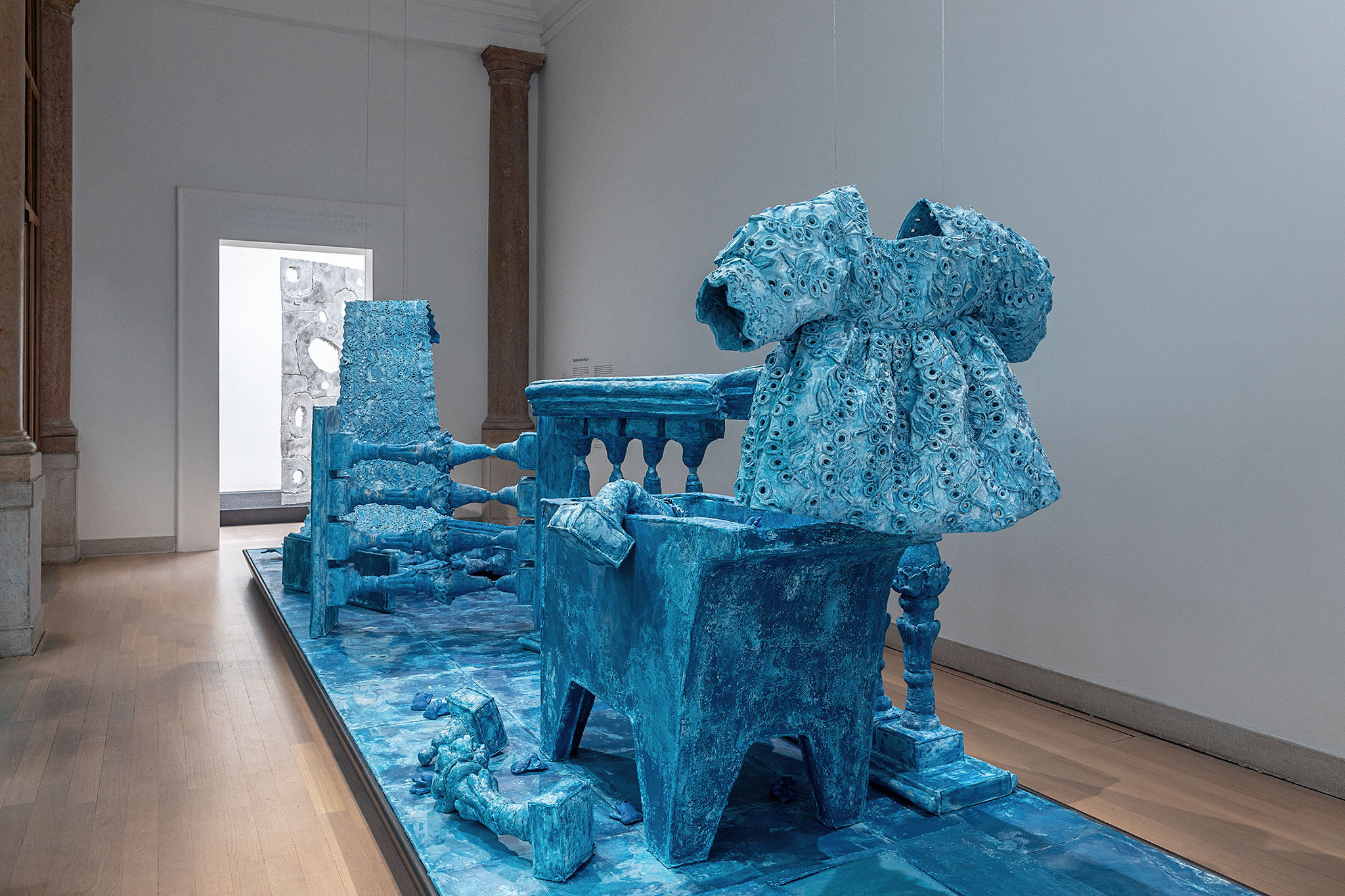
"Sãbao Azul e Água", Sandra Poulson. The British Pavilion, 2023. Photograph by Taran Wilkhu, courtesy of British Council.
Mac Collins, "Runout"
Dominoes is played widely by the British-Caribbean community inside pubs and community centers across the UK and has informed Nottingham-born designer and artist Mac Collins’ Runout. Collins investigates how the material culture and performance associated with dominoes and other cultural rituals have become tangible links to the Caribbean for the Jamaican diaspora in Britain. The exaggerated, futuristic object is made using ebonized and polished ash timber. Its ambiguous form sits somewhere between an abstracted domino and an unknown living form. Its deliberate scale and stature represent the integrity and pride that British-Jamaican communities have built around their collective culture. For Collins, Runout is a reminder of distant and fading ancestry, and the myths and stories created by generations of Caribbean communities reflecting on their position within contemporary British society. It also explores how diasporic urban rituals build social relations and occupy space.
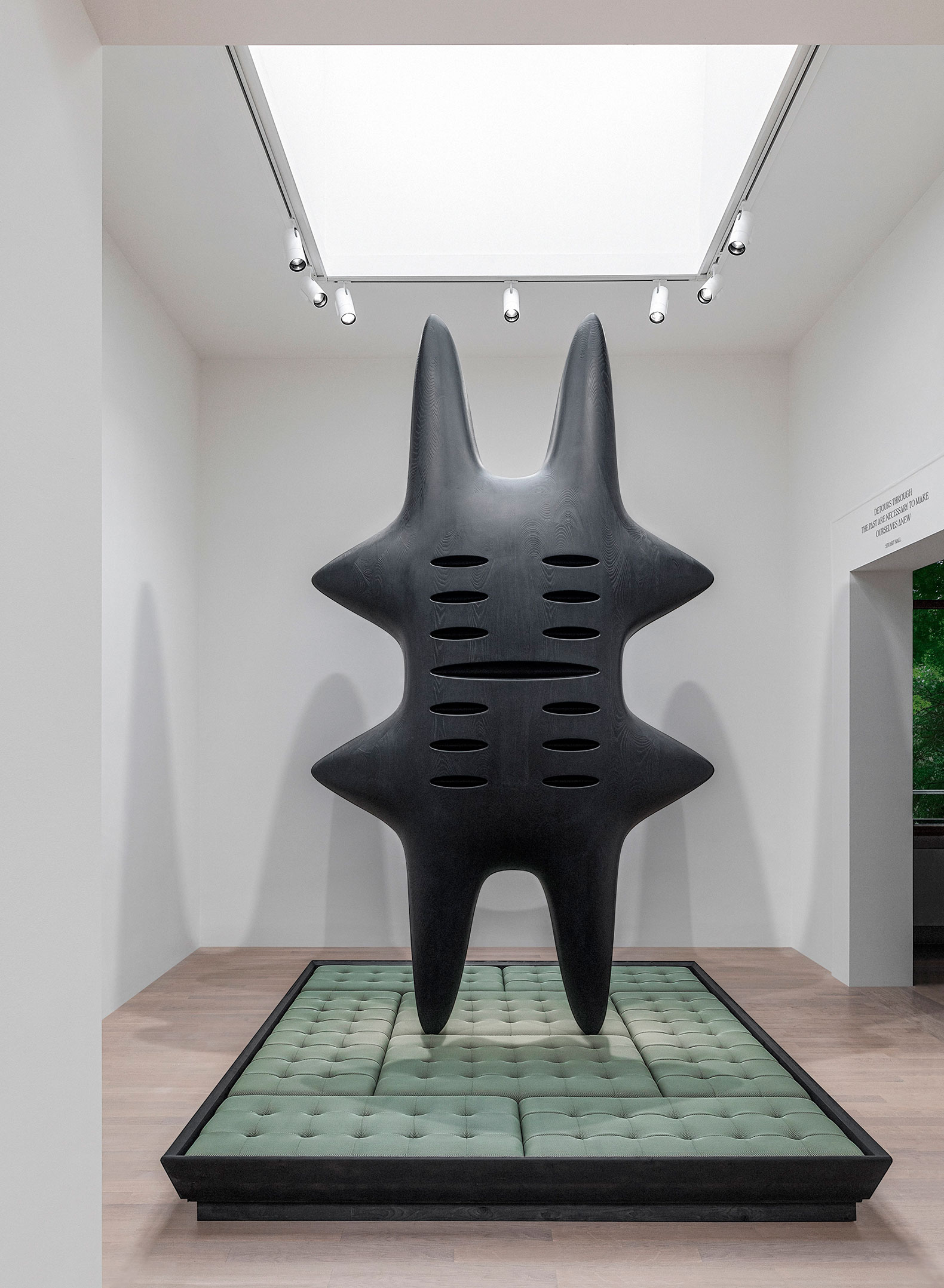
"Runout", Mac Collins. The British Pavilion, 2023. Photograph by Taran Wilkhu, courtesy of British Council.
Shawanda Corbett, "A healing is coming"
Interdisciplinary artist Shawanda Corbett creates work through the inspiration of African and Indigenous American ceramics, cyborg theory, and the fluidity of jazz. The community of ceramic vessels cast their shadows on the wall to ‘occupy’ the pavilion. A Healing is Coming represents the perceived purity that women are expected to uphold in American southern culture, a masculine view of women in US Christian culture, the women’s necessary detachment from this projection in order to live, but their struggle to heal. The work focuses on a group of women who embark on different spiritual paths to practice healing. Voodoo/Vodou, an African diaspora religion (originally Vodun in West Africa), and Hoodoo (spiritual practice) are the spiritual practices the women used to seek relief in physical and mental healing.
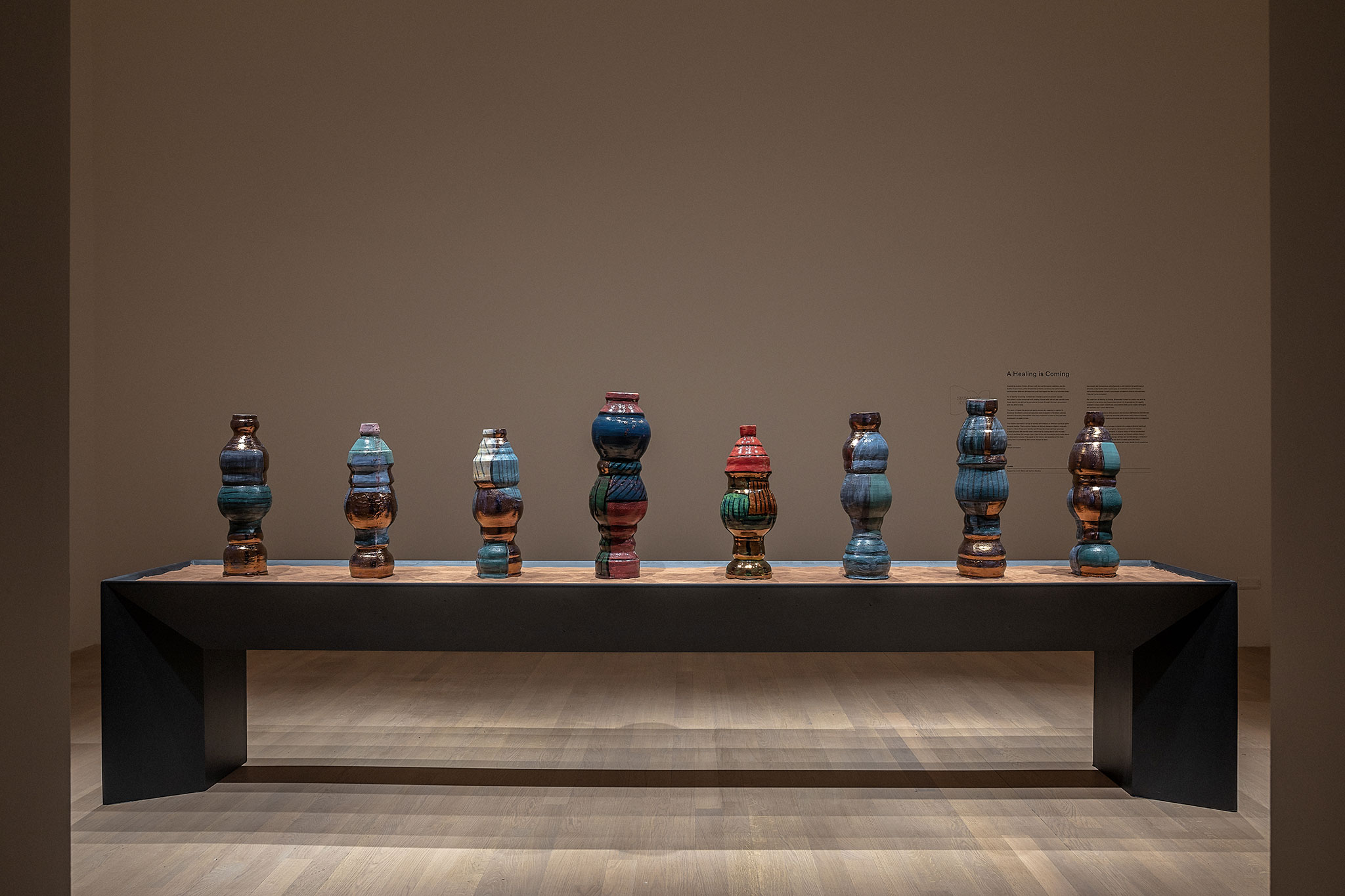
"A healing is coming", Shawanda Corbett. The British Pavilion, 2023. Photograph by Taran Wilkhu, courtesy of British Council.
Madhav Kidao, "Bardo"
Bardo has been made by melting down and recasting "Between Forests and Skies" – a pavilion designed for the V&A in 2021 by Kidao’s practice Nebbia Works. The large aluminum "wall" explores the rituals surrounding death. Bardo is a Tibetan word that refers to the intermediate state in Buddhism after death but before re-birth. It embodies the concept of "punarmṛtyu" (Sanskrit for "re-death") through the destruction of one form and the creation of another. Influenced by emergent cultures in London, and Hindu and Buddhist philosophies, Kidao’s work champions circular thinking and considers architecture’s temporality. The textures on the work’s surface have been manipulated by the sand in which it was cast, and as an acoustic panel, Bardo reflects and modulates sound, dispersing it through the holes in its surface.
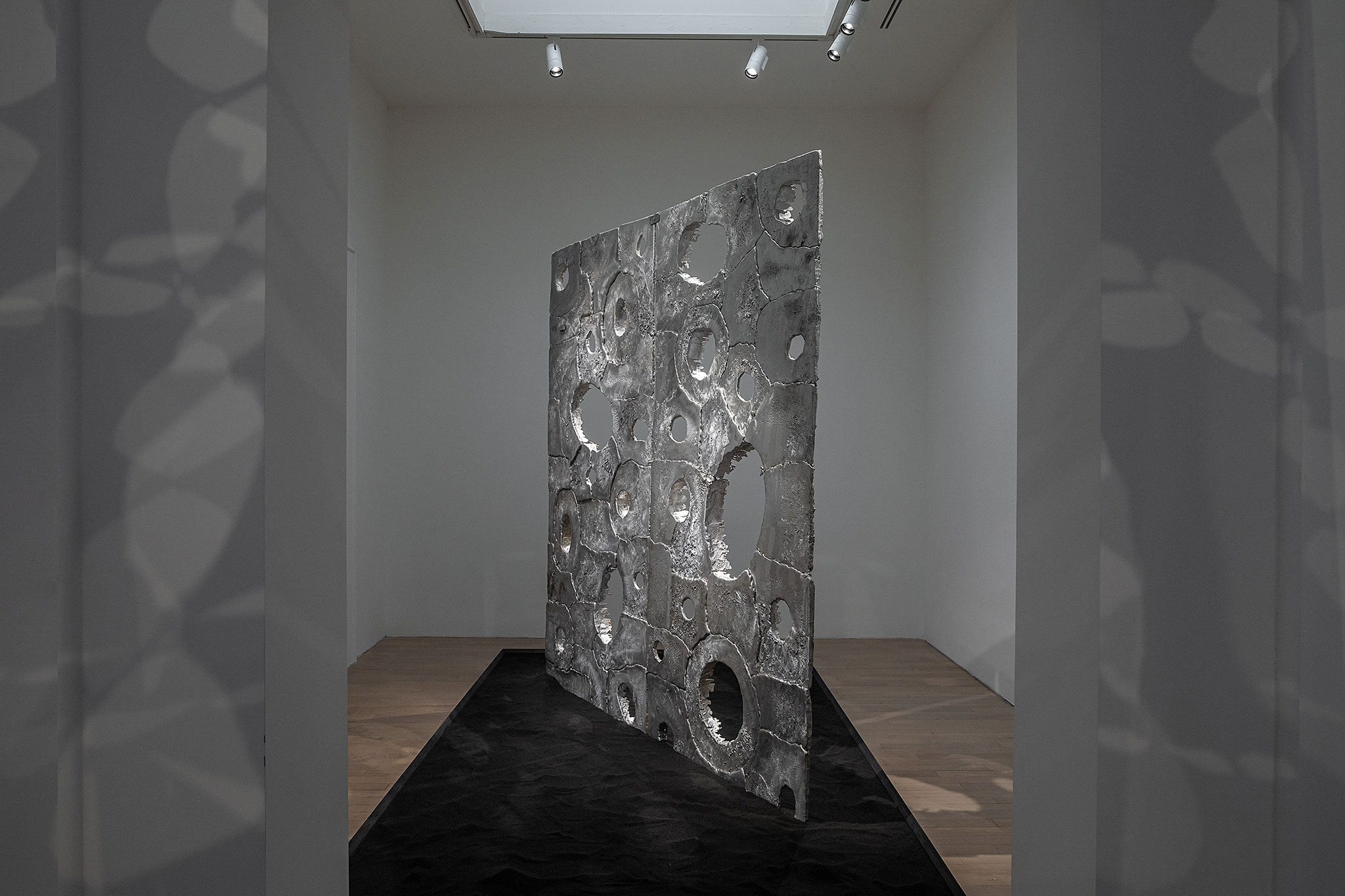
"Bardo", Madhav Kidao. The British Pavilion, 2023. Photograph by Taran Wilkhu, courtesy of British Council.
Yussef Agbo-Ola, "Muluku: 6 Bone Temple"
Muluku: 6 Bone Temple honors rituals across architecture, performance, and art within Yoruba and Cherokee communities that respect the natural world and foreground environmental consecration. Organic cotton is woven together on a frame using pineapple fiber to create a sacred structure inspired by the skin patterns of extinct and endangered species. Bones - once used to build with - are presented within consecrated architectural artifacts on top of volcanic stones, heavy with the smell of mint and lavender. Celebrating the earth’s unique ability to create life through decay and reincarnation, this living architectural entity is designed to become a habitat for non-human species before degrading and becoming food for the soil.
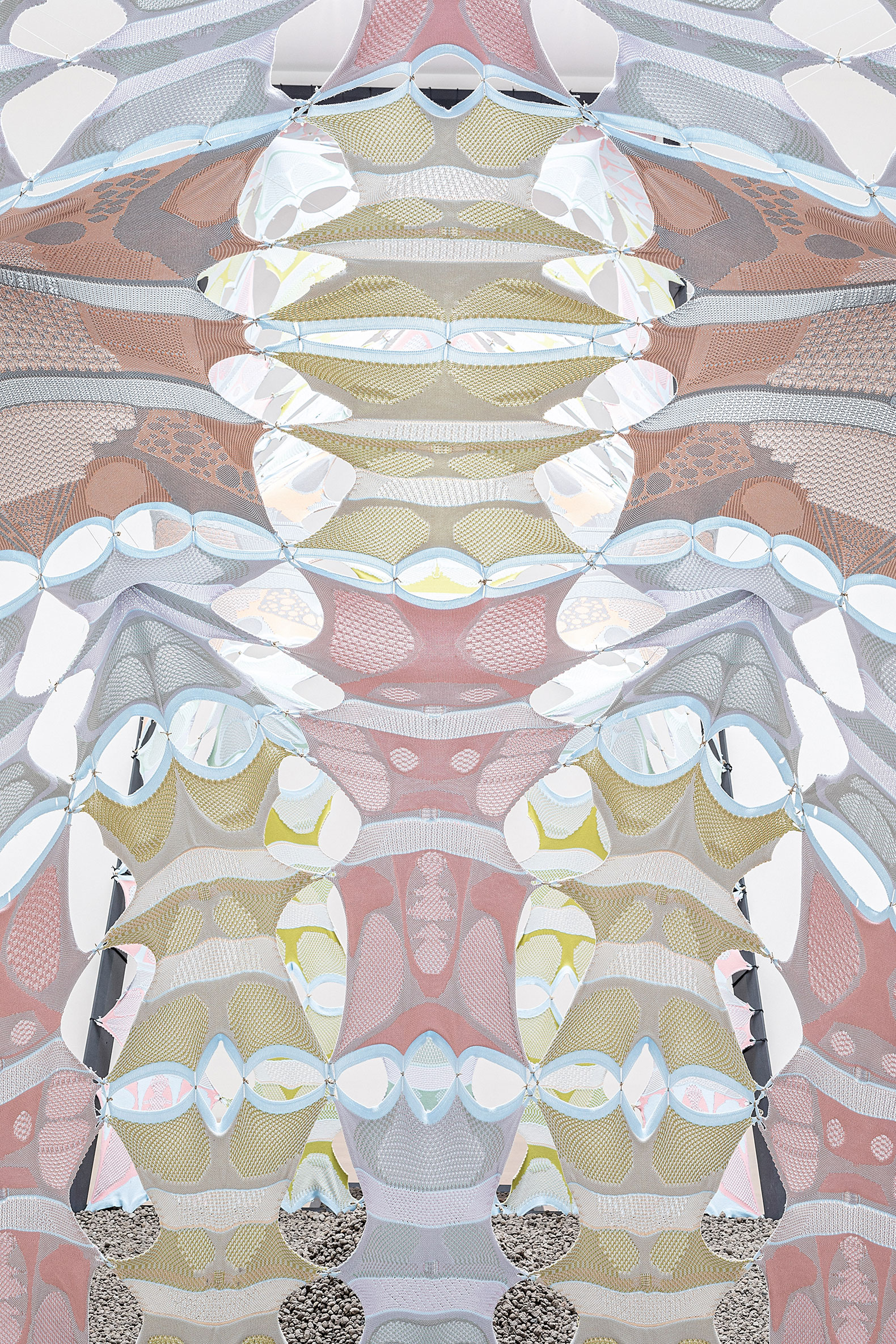
"Muluku: 6 Bone Temple", Yussef Agbo-Ola. The British Pavilion, 2023. Photograph by Taran Wilkhu, courtesy of British Council.
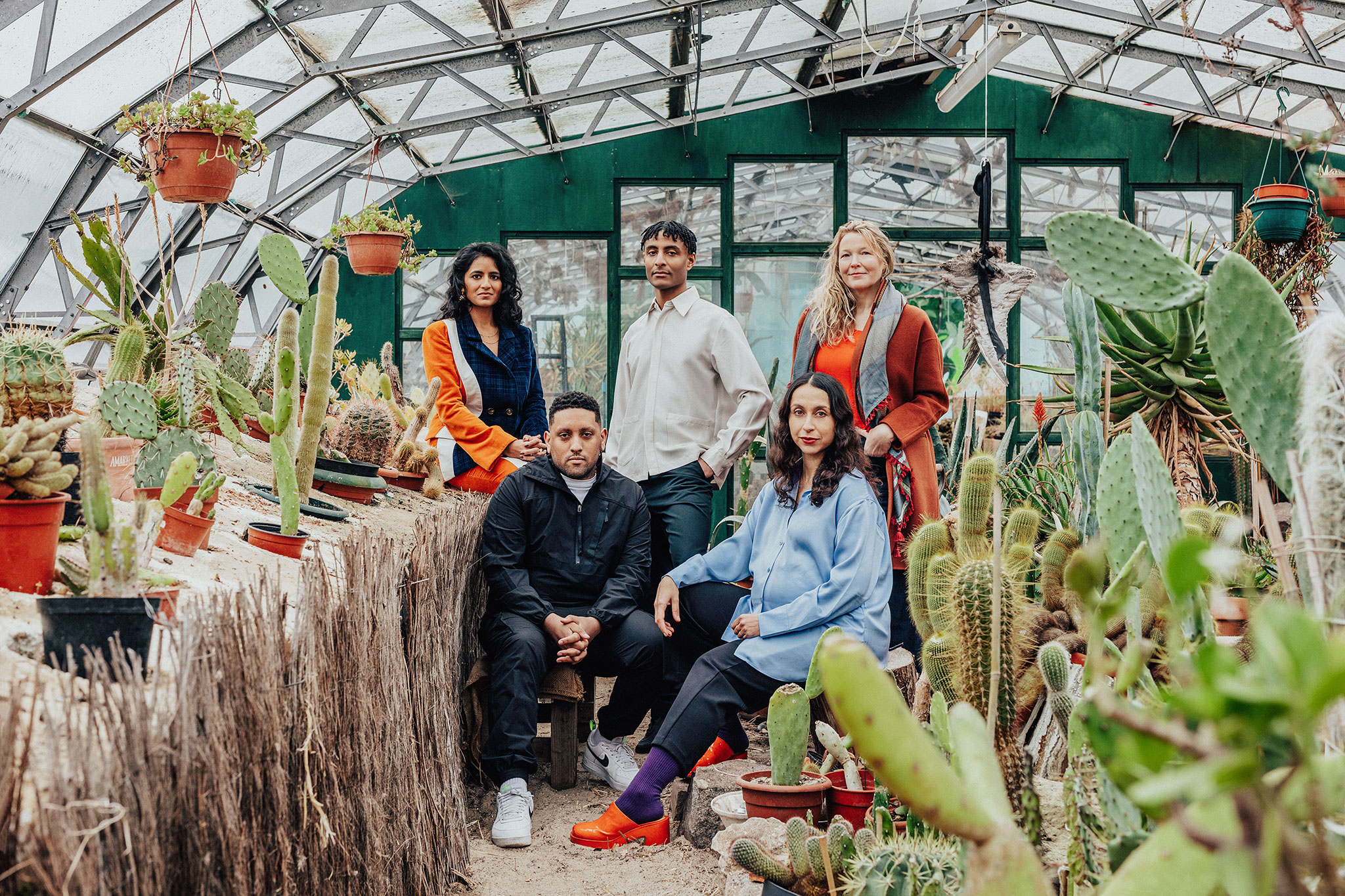
British Pavilion curators and British Council commissioner - Meneesha Kellay, Joseph Henry, Jayden Ali, Sumitra Upham, Sevra Davis - taken at Black Rootz community garden in North London. The British Pavilion, 2023. Photograph by Taran Wilkhu, courtesy of British Council.
METALOCUS is live reporting from the Venice Architecture Biennale, which takes place from 20 May to 26 November 2023. See METALOCUS Guide LA BIENNALE DI VENEZIA for all the latest information you need to know to attend and know the best pavilions in LA BIENNALE.






















































